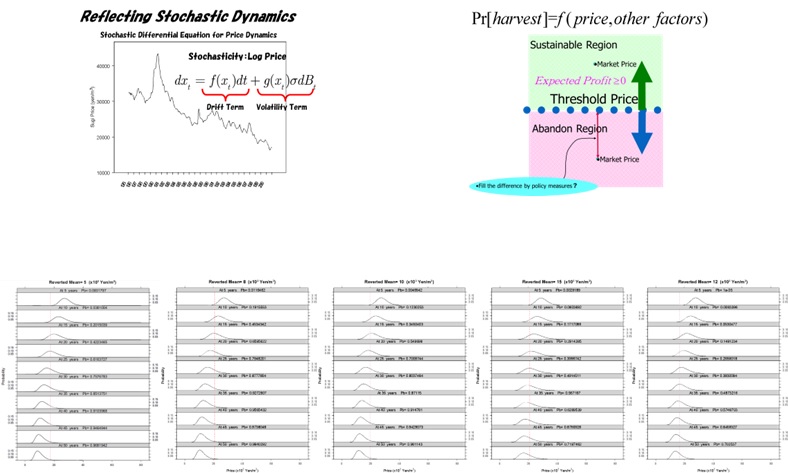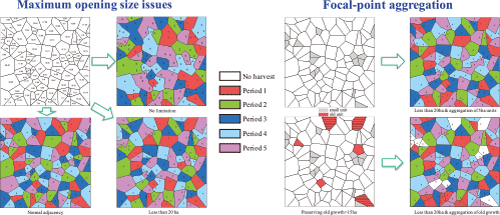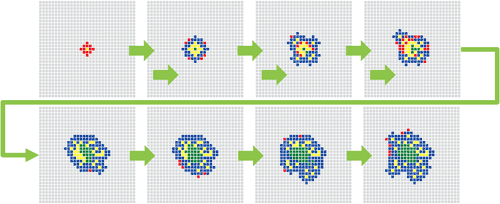
● Reconstructing forests using three-dimensional techniques
● Discrete optimization for natural resource management
● Controlling the spread of diffusive disturbances via landscape management
■ Time series analysis of risk evaluation for resource
management
 Log price dynamics, market price threshold,
and abandonment risk evaluation
Log price dynamics, market price threshold,
and abandonment risk evaluation
In evaluating risks in forest management, it is important to consider various external factors. When risk is based on the probability of damage in each sample, logistic regression is the model of choice. However, the various factors affecting risk are not static in reality. These factors gradually change over space and/or time. Under such conditions, our approach is to develop a model that takes into account these non-static factors, verify the model performance using real sampled data, and eventually improve the model for final use. We also evaluate management risk by combining the model with stochastic dynamic programming.
■ Discrete optimization for natural resource management
 Focal point aggregation and maximum opening size requirements to avoid large clearcuts within spatially constrained harvest scheduling
Focal point aggregation and maximum opening size requirements to avoid large clearcuts within spatially constrained harvest scheduling
Agricultural and forest resources are multifunctional, providing numerous services such as water source recharge, flood prevention, and biodiversity conservation in addition to producing agricultural and forest products. When evaluating these services through the lens of socioeconomic benefits, it is prudent to consider how to use them efficiently and effectively. This is achieved through the use of discrete optimization, where the optimal spatial and temporal use of these resources are sought in order to meet socioeconomic objectives. Avoiding large clearcuts and creating suitable habitats for endangered wildlife and plant species are examples of problems tackled in this project in the context of resource utilization and adjacency constraints
■ Controlling the spread of diffusive disturbances via
landscape management
 The cellular automaton model: Optimal allocation of treatments to prevent diffusive spread of insect pests within the managed landscape
The cellular automaton model: Optimal allocation of treatments to prevent diffusive spread of insect pests within the managed landscape
To sustainably use forest resources, it is important to reduce the risk of the spread of diffusive disturbances such as fire, typhoons, and damage caused by biological disturbances including invasive species and pest insects. We seek an effective and efficient way to mitigate risk, via discrete temporal and spatial optimization systems that capture the biological and physical mechanisms of disturbance.
